
CERN (1), in Geneva, is the most prestigious research centre for particle physics and the biggest centre of research in Switzerland. CERN is celebrating its 50th anniversary.
By Michael Breu
"Cern fascinates me," says Günther Dissertori, Professor at the ETH Institute for Particle Physics (2). The 34 year-old physicist from South Tyrol searches for words. "It's not easy to explain. It's the inspiring atmosphere, the spirit of Cern, that fascinates me." No other research institute fostered a greater level of intensive collaboration between scientists from all over the world as the European Nuclear Research Centre in Geneva. "When I'm at Cern I can speak four languages in a day–German, English, Italian and French," says Dissertori, referring to the international mixture of the people who work in Geneva. "Just recently I noticed women from the United Arab Emirates in their traditional clothes. Religion plays no role at Cern.
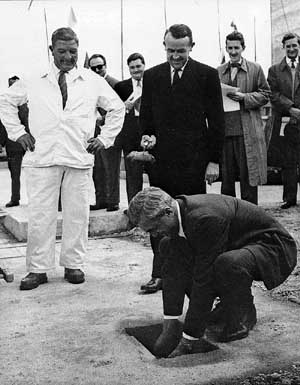 |
Laying the foundation stone in 1954: The official start of the "Conseil Européen pour la Recherche Nucléaire", supported by twelve states, including Switzerland. The organisation was established on a provisional basis two years earlier. Picture: CERN large
|
Dissertori finds it especially remarkable that the centre was founded so swiftly after the end of World War II. "It was certainly a huge step," he says, especially as lots of physicists had left the old continent in the 30s and 40s to go to the United States to do research. "The physicists led with a good example by sitting down together at the table, again."
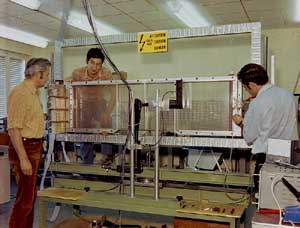 |
1968: Georges Charpak develops a particle detector based on an ionisation chamber, for which he was awarded the Nobel Prize for physics in 1992. large
|
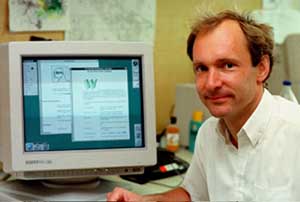 |
1990: Tim Berners-Lee invents the World Wide Web. large
|
|

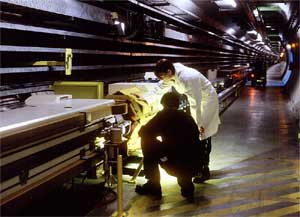 |
1989: The Large Electron Positron Collider (LEP) takes up its work. Highpoint: the first trace of Higgs boson was detected in 2000. large
|
Even today the emphasis at CERN is placed on a common goal; proving the existence of the Higgs particle, for example, or the super-symmetric particle or dark anti-matter (which could also be made up of super-symmetric particles), always in the hope that yet another piece of the puzzle will be found to help to explain the universe. "Things will become very exciting when the LHC, the Large Hadron Collider, begins work in 2007," says Dissertori. From that point on, particle physicists at Cern could start to produce a real flood of publications. "It will be an intellectual challenge to analyse the phenomenal amounts of data that LHC will generate. Scientists from the ETH Institute of Particle Physics will be in the front row.
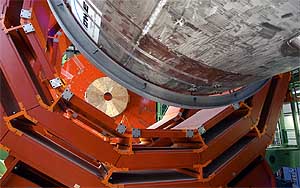 |
2004: CERN celebrates its 50th anniversary. Under construction: the LHC, which will commence its work in 2007. large
|
| LHC: the big challenge |
|
(mib) Robert Aymar wants to enhance the focus of the four aims of CERN: research, education, transfer of technology and the integration of politically disparate countries. Aymar, a French national and Director of Cern since January 2004, was formerly head of the planned International Thermonuclear Energy Reactors, ITER. "The biggest challenge" in the coming years was to complete the building of LHC. "We don't have enough people to do the work–in my opinion," he told the newspapers, Tages-Anzeiger and Sonntags-Zeitung. "The LHC is a discovery machine. We're not building it to confirm a single theory that exactly predicts what results the LHC experiment will deliver".
2,500 people work at Cern. Added to this, there are around 5,000 visiting scientists. The annual budget is currently 1'300 million CHF, of which Switzerland contributes 40 million CHF.
|
 |
| Open day |
|
(mib) Cern's birthday is being commemorated in grand style. The doors of the research centre in Geneva will be open to all comers on 16th October. Over fifty different activities are planned. A symposium for the general public took place on 1st October at the University of Berne, which was organised by the newly founded Swiss Institute of Particle Physics (Chipp) (3). The official celebration takes place on 19th October. Those invited to the event include ministers responsible for research from the partner states.
|
|
